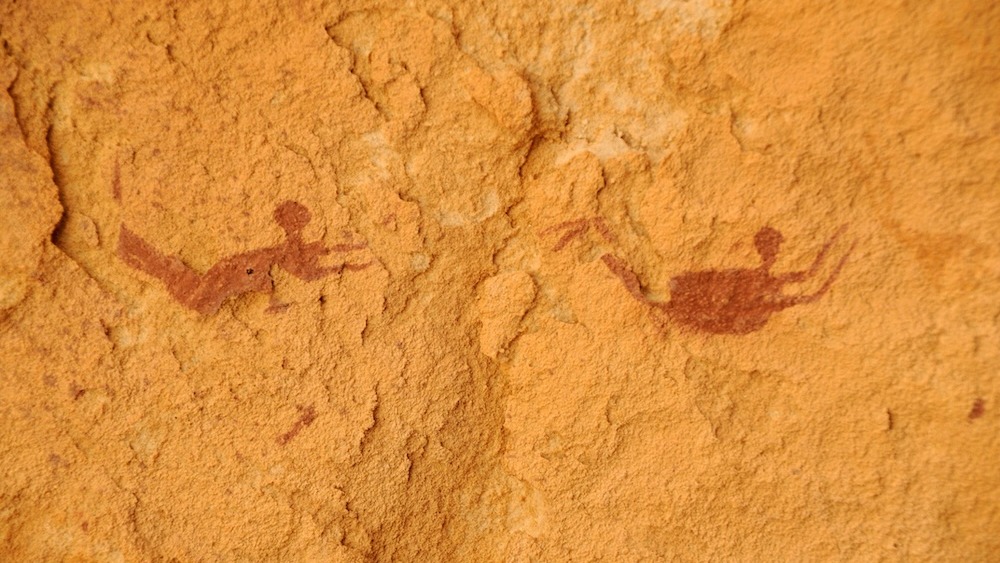Cave of Swimmers: 9,000-year-old rock art of people swimming in what's now the arid Sahara
This series of paintings, found inside a cave in the Sahara, shows a pair of swimmers.

Name: Cave of Swimmers
What it is: A series of rock paintings depicting a group of people swimming
Where it is from: Egypt's Western Desert
When it was made: Between 6,000 and 9,000 years ago
Related: Jade burial suit: 2,000-year-old 'immortality' armor worn by Chinese royalty
What it tells us about the past: Thousands of years ago, the Sahara Desert was not the dry, sandy landscape we know it as today — it was a lush, green oasis. In fact, the sandstone-rich Gilf Kebir plateau, which stretches from southwestern Egypt into southeastern Libya and is where the rock art resides, offers further evidence that this swath of land was once accessible to bodies of water and not always a barren desert.
In 1926, the remote area was mapped by European cartographer László Almásy who stumbled upon two "side-by-side shallow caves" adorned with hundreds of rock paintings of animals and humans, including handprints that would have been created by someone "blowing pigment onto the rock face over splayed fingers," according to The British Museum.
Sign up for the Live Science daily newsletter now
Get the world’s most fascinating discoveries delivered straight to your inbox.
But one set of drawings stood out to researchers: a pair of humans with their arms and legs splayed out as if they were swimming. Many researchers think the paintings offer a glimpse of what daily life would have looked like before the region became a desert. However, some think the depictions are more metaphorical.
The artwork reached pop culture status when it was featured in author Michael Ondaatje's book "The English Patient" (McClelland & Stewart Inc., 1992) and, later, in the 1996 film of the same name, according to the Bradshaw Foundation.
Jennifer Nalewicki is former Live Science staff writer and Salt Lake City-based journalist whose work has been featured in The New York Times, Smithsonian Magazine, Scientific American, Popular Mechanics and more. She covers several science topics from planet Earth to paleontology and archaeology to health and culture. Prior to freelancing, Jennifer held an Editor role at Time Inc. Jennifer has a bachelor's degree in Journalism from The University of Texas at Austin.










